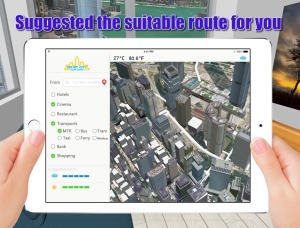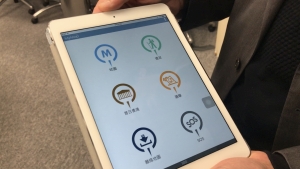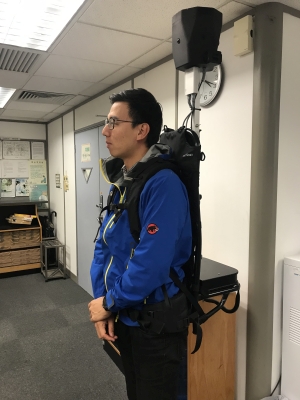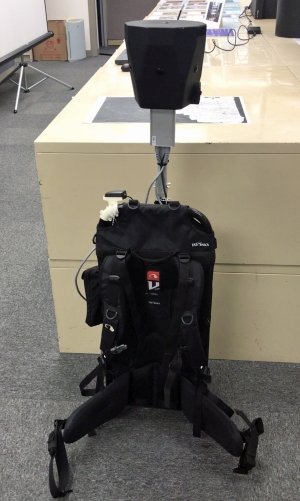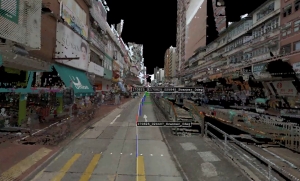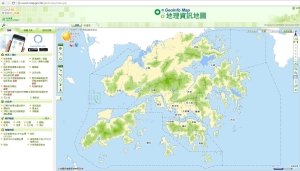Building a smart city: Development of spatial data
|
Have you ever tried to “check-in” to a location on social media? With a GPS-enabled smartphone installed with a mobile map app, you can tag your location and share it with friends. You can also find out how to get to a destination or search for nearby restaurants, bus stops, tourist attractions as well as acquiring real-time traffic information. All these location-related information is called “spatial data”. You may find “spatial data” abstruse and recondite, but it has already formed part of our daily life. To put it simply, spatial data is any data with reference to a specific geographical location. Besides basic map data, it also covers geospatial datasets such as location of public facilities, traffic information, retail services location, demographics data, etc. At present, different government departments and individual public and private organisations collect and maintain their own sets of spatial data. If these datasets are being compiled in accordance with sets of agreed standards and definitions, not only will it facilitate use by the general public, but also help enhancing efficiency of our city management. Promoting an infrastructure to share spatial data In view of this, the Development Bureau, collaborating with the relevant government bureaux/departments, is promoting the establishment of a Common Spatial Data Infrastructure (CSDI). The Development Bureau has commissioned a consultancy study on strategy development of CSDI in 2017 with an objective to formulate the related strategy to develop an information infrastructure to share spatial data across government departments as well as the public and private organisations; to ensure the accuracy, interoperability and updateness of the spatial data; and to support smart applications development. With CSDI, users can get the timely geographical location information effectively and it also facilitates development of spatially-enabled applications and services to serve the community better. For instance, at present, addresses of units can be written in various forms despite being in the same building. This hinders services including courier, facility maintenance, and rescue. Through the CSDI policy, we hope to formulate the standards to define and geo-tagged address information in a unified way, making address information more accurate and help enhancing communication and timely exchange of address data among government departments and institutions. Continuing to enhance government mapping services The Lands Department has been producing various maps and providing mapping services which are well-received by users. Here I have invited the Senior Land Surveyor of Lands Department, Mr NG Wai-tak, Victor, to introduce the Government’s online mapping services. Among the services, GeoInfo Map (https://www.map.gov.hk/), which has been delivering geospatial information services to the general public for seven years, provides convenient access to integrated geospatial information for the members of the public. The public facility information provided on GeoInfo Map includes POA school net boundaries, government leisure facilities, electoral boundaries, etc. In order to enhance service quality, the department will conduct a large scale revamping exercise to improve the GeoInfo Map service between March and April, with emphasis on the map browsing performance and spatial data updating frequency, hoping to provide faster and more accurate information for the public. Recently, the department has added the information about “Vacant Government Sites Available for Application for Greening or Government/Institution/Community Uses” on GeoInfo Map for public access and to facilitate the non-government organisations to apply for short-term uses. We will continue to use the Land Information System of the Lands Department to integrate land information and to strengthen spatial analysis for supporting the works on land administration and management, and town planning. According to a survey, one Hong Kong citizen, on average, has more than two mobile devices. As early as 2014, the Lands Department launched free mobile map app MyMapHK with six themes – Map, Hiking, Old Hong Kong, Election, Emergency and Offline Map. The app allows public users to view maps and search locations through mobile phones while on the go. I learnt that the hiking information is popular among the facility information integrated in the app. The Lands Department will continue to listen to users’ views to formulate a series of development plan in future. The development team will also regularly update the application every one or two months to continuously improve the quality of MyMapHK . Actively promoting smart city development The public engagement exercise for “Hong Kong 2030+: Towards a Planning Vision and Strategy Transcending 2030” has completed earlier. Our suggestions on establishing a CSDI and “Information and Communications Technology Platform” commensurate with the formulation of a smart, green and resilient city strategy and the development direction for the Smart City Blueprint for Hong Kong announced by the Innovation and Technology Bureau. The enhanced interoperability and sharing of spatial data is expected to help government planning and policy formulation. With CSDI, the industry, academia and citizens can have easy and convenient access to spatial data, which helps to improve quality of life and business efficiency. I expect that with the progressive launch of CSDI, the use of people-centric information and communication technology can also be facilitated. In addition to the community ingenuity and creativity, we hope our smart city can make a big progress in using spatial data and exploring innovative application services. |
|
14 January, 2018
Back

